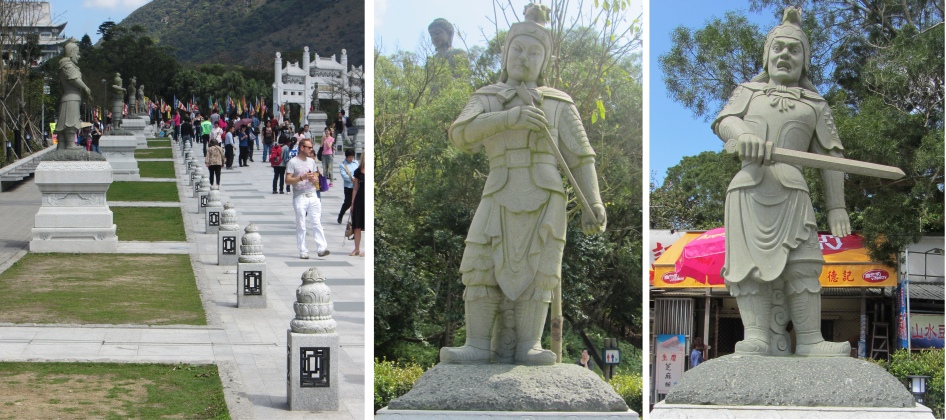 Path of the Twelve Emperors |
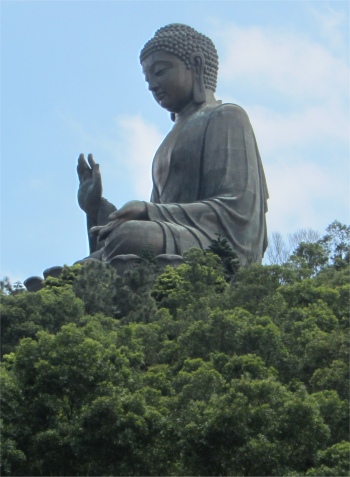 Big Buddha on the Hill |
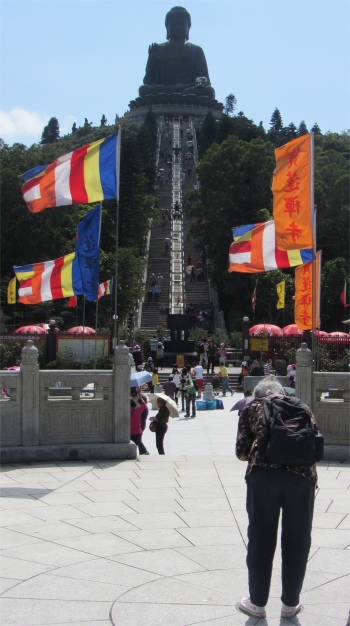 Praying to Big Buddha |
Via a mixture of trains, we arrived at Tung Chung, with the intention of taking the 5.7km cable car, the longest in Asia, which would deliver us to Ngong Ping. Sadly, it was out of action, so we joined dozens of others in a long queue for a bus up to the village. The ticket office ladies, who only understood place names, grasped that we were wanting to travel on a circular route on the island, and sold us cheaper day passes.
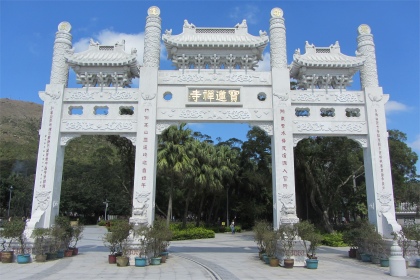 Gateway to Po Lin Monastery |
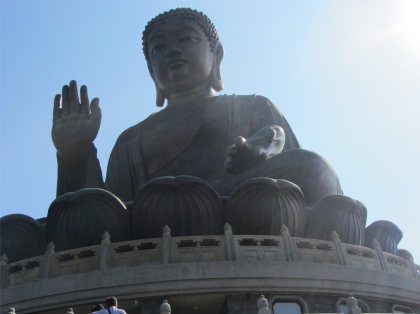 Getting Close to Big Buddha |
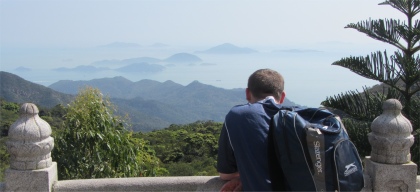 Dan Viewing Islands off Lantau island |
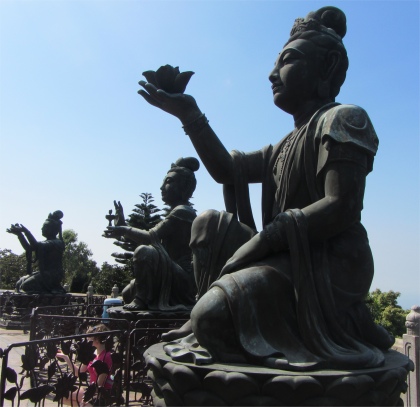 Bodhisattvas |
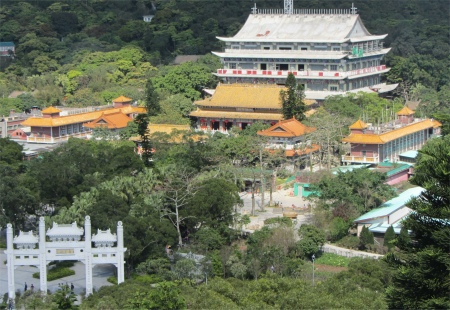 Po Lin Monastery |
Standing right next to the Big Buddha, it is easy to see why few statues anywhere in the world have such a powerful pull on the imagination as this Big Buddha gazing serenely on the Po Lin Monastery from its hillside site at Ngong Ping on Lantau Island.
 Closer View of Po Lin Monastery |
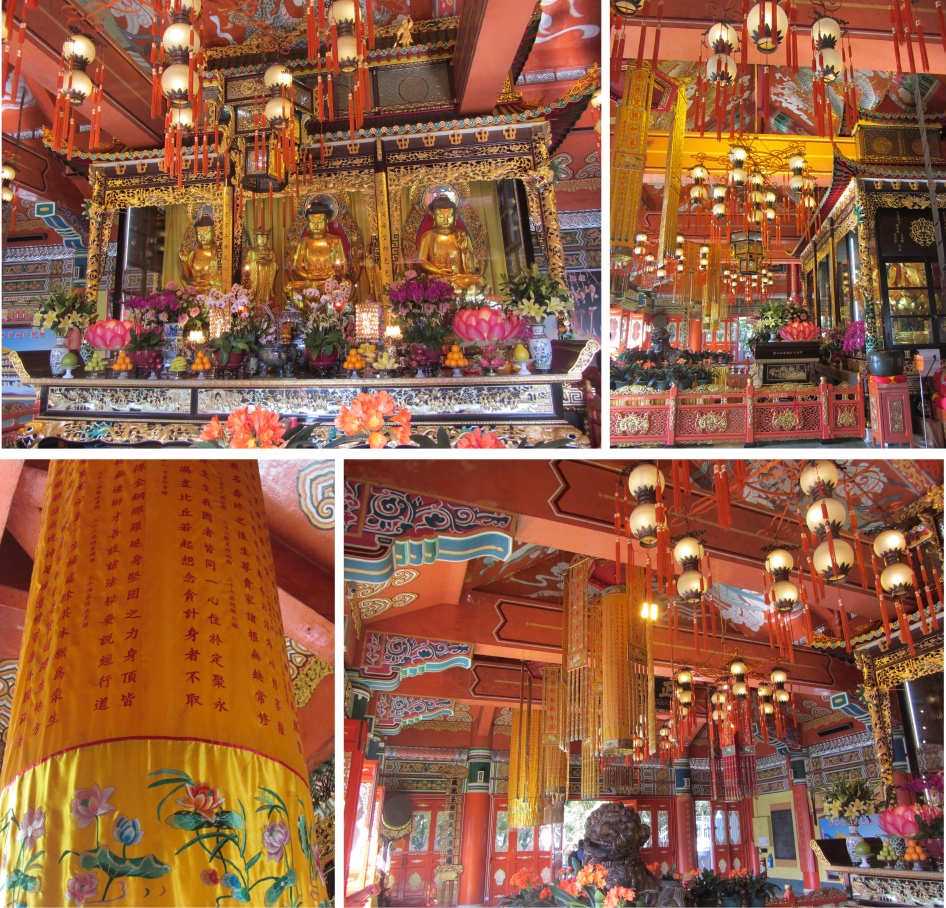 Inside Po Lin Monastery |
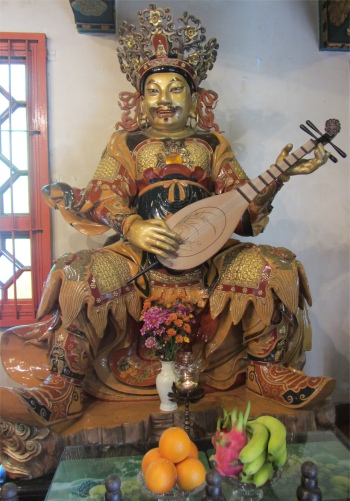 Hendrix Predecessor |
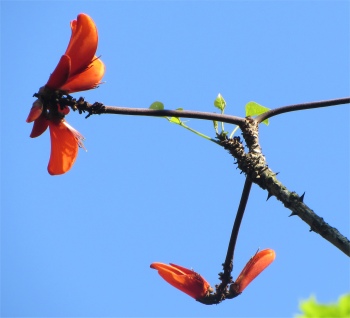 Spring Has Arrived |
We left the holy place, and took a walk through bamboo groves which occasionally opened out to small plantations guarded by scarecrows. The odd tea-house lined the trail, ramshackle affairs with old ladies going about their business with handfuls of vegetables. The trail brought us to the Wisdom Path at the foot of Lantau Peak, an outdoor replica of the centuries-old Heart Sutra, one of the world's best known prayer.
While on a visit to China in 1980, Professor Jao Tsung-I saw the Buddhist stone carvings of the Vajracchedika Prajnaparamita Sutra on Mount Taishan in Shandong. This inspired Professor Jao to create a monumental calligraphic work of the Heart Sutra. The Heart Sutra is a treasured text revered by Confucians, Buddhists and Taoists alike. It is written in a simple and concise manner, yet its message is truly profound.
Professor Jao completed this calligraphy of Heart Sutra in 2002 and dedicated it to the people of Hong Kong in June the same year. The work is now presented in the form of a large-scale wood inscription display in an outdoor environment. The calligraphy has been carved on to wooden columns reminiscent of bamboo tiles (zhujian) used for writing in ancient times.
 Wisdom Path |
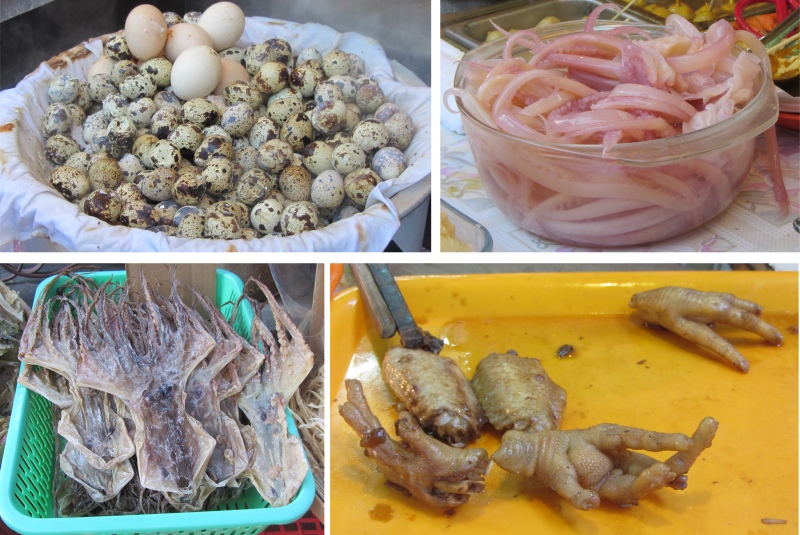 Tai O Market Delicacies |
The Heart Sutra articulates the doctrine of "emptiness". But this "emptiness" must not be understood as the denial of phenomenal existence - it is not nihilism. What it teaches is that everything is dependently arisen from conditions: an event (a "thing") occurs if and only if the adequacy of conditions arises. Since everything is dependently arisen, there is no such thing as an eternally abiding entity. The doctrine of emptiness also spells out the relativity of all views. When one acquires this Wisdom of "emptiness", one will realise that all physical and mental events are in a constant process of change, and accordingly everything can be changed by modifying the conditions. Understanding the relativity of all standpoints will also prevent one from becoming irrationally attached to things. In this way, one will come to be free from all mental obstructions, and attain to perfect harmony and bliss. At the same time, with the understanding that all are dependently arisen, one will treasure and make good use of the conditions that are available, realising the ideal of benefiting oneself and others.
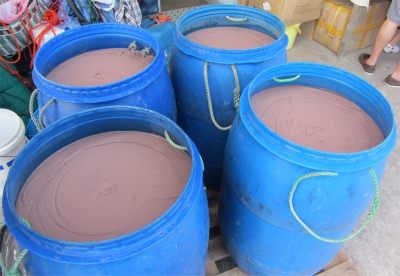 Pink Shrimp Paste |
Initially, one may find it difficult to understand the Heart Sutra, not least because of its unusually profound doctrine. But if one persists with receptivity, reading and meditating on it, one will eventually come to comprehend the secret of the universe and the truth of life contained therein. Hmmm .... I will have to read and meditate for a while.
There were lots of hikes to be had around this part of the island, but we decided to grab a bus, and follow another winding route towards the western end of the island to the small town of Tai O.
Tai O, once a garrison town, has now been a peaceful fishing town for more than three centuries. It is located in the northwest of Lantau Island, and is also known as "The Venice of the Orient", with crisscrossing canals running the length and breadth of the small fishing harbour. Tai O retains most of its historical setting such as waterways, fishing boats and stilt houses, the latter serving as a tourist attraction. Before a drawbridge was built, the only way to cross the creek was via a rope-tow ferry, hand-pulled mainly by elderly Hakka women.
In the market, a traditional Chinese food of dried salted fish, a local specialty, was to be found on many of the stalls. Some stalls even had small stone grills on which the dried fish was laid. I couldn't quite get to grips with the grilling of dried fish, but the Chinese seemed to adore the resulting morsels.
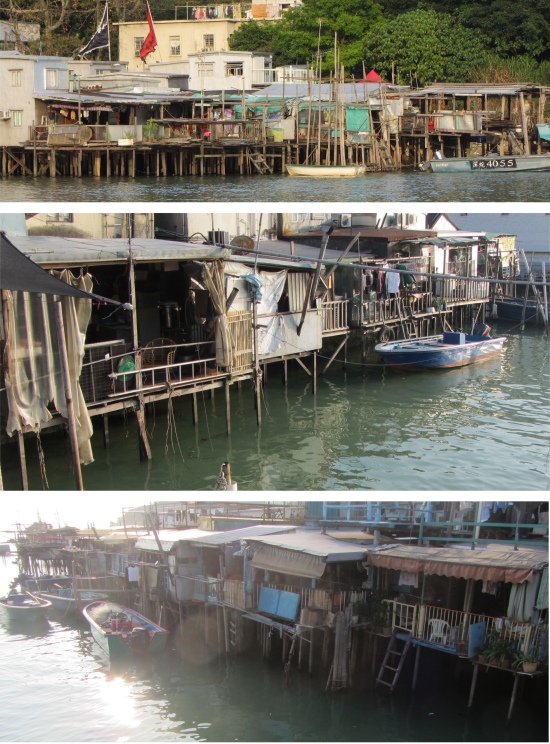 Tai O Stilt Houses |
We arrived at the end of a stone pier extending 50m out into the sea, and shared it with a hundred or so Chinese folk engaged in fishing, yattering, cuddling or staring into space. We decided to engage in the pastime of ship watching, with quite a few large containerships anchored out in deep waters. Numerous small craft whisked parties of gleeful, shouting folk around a headland to view spectacular cliffs and beaches I guess. A few other small craft just came as far as the pier we were standing on in order to entice people to take the quick route back to town over the blue waters. We took advantage of this option and soon we were back in town and queuing up at the bus depot waiting for a bus to Wai Ho, from where we would catch a ferry back to Central.
Once in Wai Ho, we decided to dine in the small port, and discovered the area is full of expatriates, many in the same eating establishment. Many expatriates, who pose in their business suits in bars after work, are resented a little for their excellent terms of employment and frequent paid leave. Such expatriates have been given the generic description "FILTH" - "failed in London, try Hong Kong".
On the ferry back across the harbour to Kowloon, a woman plonked herself next to me, a little flustered. "We've been together for only 2 hours and we're already arguing," she told me. She had recently arrived from Chicago, on a separate plane from her other half who was strutting around the ferry. I was not sure of the chap's nationality, but I gathered he had some phobia about the passport he carried and the different authorities of different countries. Some people live complicated lives.
They had only arrived 6 hours ago, so I gave her a quick review of places to visit, which she seemed grateful for, and as we left the ship, I wished her the best of luck.
Dan and I took a stroll up Nathan Road, the eagle-eyed Dan spotting the Brisbane couple across the road again. Were they stalking us? We decided not to attract their attention. Blimey, folk would think we were trying to avoid them.
We wound up the evening at Ned Kelly's Last Stand, a bar that has live traditional and Dixieland jazz playing every night. The band was very competent, and managed to get some folk up swinging their hips.
We got chatting to a couple of Dutch guys who sat at the same table. They had been to Quangdong where they were getting a piece of equipment manufactured, which they hoped would make their fortunes.
The technical guy raised the issues people have with existing keyboards, such as repetitive strain injury. What he had designed was a small book sized keyboard, that could be opened up and held as a book, and the keys were underneath the book. Users would simply balance the "book" on their knees or table or whatever, and touch type the keys hidden away from them. The side of the "book" visible to them would have a set of keys printed, each of which would be lit up as the corresponding key below it was pressed. This was a more natural process for typing, well it was for him, but it seemed alien to me. Other function keys lay along the sides of the "book".
"The Chinese are having difficulty trying to work out how to test it during the manufacturing process," he told me. His colleague was the business arm. His job is to now push the product out and launch it onto an unsuspecting world. The concept goes under the name of Yogitype. Watch that space.
| ...... previous day | next day ...... |
| Hong Kong | Hong Kong |
|
